Recommendations for Purchasing Knock Down Bins
By clarifying the needs, testing the quality, evaluating the suppliers and optimizing the contract terms, the technical traps and business risks in the selection of knock down bins can be effectively avoided to ensure the maximum benefits of the whole project cycle.
1. Clarify the core needs and scene adaptation
Industrial and heavy equipment transportation
Recommended type: steel-sided knock down bins (KD box) or frame container.
Key parameters:
Load-bearing capacity: ≥2 tons (steel-sided wooden box) or ≥10 tons (frame container), suitable for automobile engines, machine tools and other equipment.
Seismic performance: pass the ISTA 3A vibration test (simulating transportation shock) to ensure that the equipment is not displaced or damaged.
Environmental compliance: Plywood must comply with the ISPM 15 standard (fumigation-free) to avoid export delays.
Commercial and retail turnover
Recommended type: folding plastic square box or modular container shop.
Key parameters:
Folding efficiency: the volume is reduced to less than 1/5 of the original volume after folding, which improves the utilization rate of storage space.
Color customization: support Pantone color card customization to adapt to brand visual needs.
Modular expansion: supports multi-layer stacking (≥4 layers) and side panel splicing, suitable for temporary store or warehouse expansion.
Outdoor and emergency scenarios
Recommended type: folding container or high-strength plastic turnover box.
Key parameters:
Quick deployment: The container needs to support one person to complete the unfolding and fixing within 30 minutes.
Waterproof level: IP67 (plastic box) or Class A fireproof (container), adapt to extreme climates.
Cycle life: reuse times ≥50 times (plastic box) or ≥100 times (container), reducing the full cycle cost.
2. Quality risk points and detection methods
Structural strength detection
Wooden box:
Hinge firmness: The hinge foot needs to be embedded in the wood board ≥5mm, and the tensile strength is ≥50N/cm2 (ASTM D905 standard).
Plywood thickness: ≥9mm, moisture content ≤12% (GB/T 9846 standard), to avoid cracking or deformation.
Plastic box:
Rotational molding process: wall thickness uniformity error ≤±0.3mm, no bubbles or delamination defects (visual inspection + ultrasonic inspection).
Load-bearing test: empty boxes are stacked in 4 layers, no deformation for 72 hours (ISO 8611 standard).
Functional accessories verification
Lock system:
Steel-edged wooden box: butterfly lock or box lock, opening/closing times ≥1000 times without failure.
Container: equipped with TSA customs lock or electronic password lock, anti-theft level reaches EN 1300 B level.
Wheel system (movable box):
Universal wheel: silent level ≤65dB (A), 360° rotation without jamming, load-bearing walking ≥10 kilometers without damage.
III. Supplier evaluation and cost optimization
Production capacity verification
Wooden box: laser cutting, CNC nailing and automatic spraying equipment are required, with a daily production capacity of ≥200 sets.
Plastic box: Roto-molding machine capacity ≥500L, support multi-color one-time molding, reduce secondary processing costs.
Container: ISO 9001 and ISO 14001 certifications are required, with an annual production capacity of ≥5000TEU (standard containers).
Cases and certification verification
Similar projects: Suppliers are required to provide ≥3 cases of the same scenario (such as photovoltaic power station equipment packaging, post-disaster resettlement housing deployment).
Test report: It must include SGS or TüV's load-bearing test, drop test and environmental protection test reports.
Negotiation points:
Volume discount: When ≥500 sets, the price can be reduced by 10%-15%.
Warranty clause: Suppliers are required to bear the compensation liability for transportation damage rate ≤0.5%.
IV. Pitfall avoidance guide and contract terms
False advertising identification
False load-bearing label: Suppliers are required to provide third-party test reports (such as the National Packaging Testing Center).
Material fraud: Pass the combustion test (PC material has no black smoke, ABS material has a pungent smell) or spectrometer test.
Contract risk clause
Acceptance criteria: Clearly define the test method (such as ISTA 3A vibration test, IP67 waterproof test) and the unqualified compensation clause.
Warranty period: industrial wooden boxes ≥ 3 years, commercial plastic boxes ≥ 2 years, containers ≥ 5 years.
Qingdao Feiyuan Storage Equipment Co., ltd. is a manufacturer of storage and logistics facilities that integrates research and development, production, and sales. For more information about knock down bins, please contact us.
Address:Lime KiIn Industrial Zone, Wangtai Town, Huangdao District,Qingdao, China.
Email:admin@fyracks.com
Hot keywords:
knock down bins
What are the Core Advantages of Rack Steel Pallet Rack?
Rack steel pallet rack is a high-strength storage system made primarily of steel, assembled through steel welding or interlocking. It features high load-bearing capacity, structural stability, and durability.
What are the Design Features of Tire Storage Rack on Wheels?
Tire storage rack on wheels are devices specifically designed for tire storage and turnover.
What are the Advantages of Using Pallet Cages for Lifting?
Pallet cages for lifting are logistics equipment combining pallet and cage structures, specifically designed for scenarios requiring vertical handling.
What Types of China Tire Racks are There?
China tire racks as specialized equipment for storing, handling, and transporting tires, can be categorized into several types based on their design features and application scenarios.



